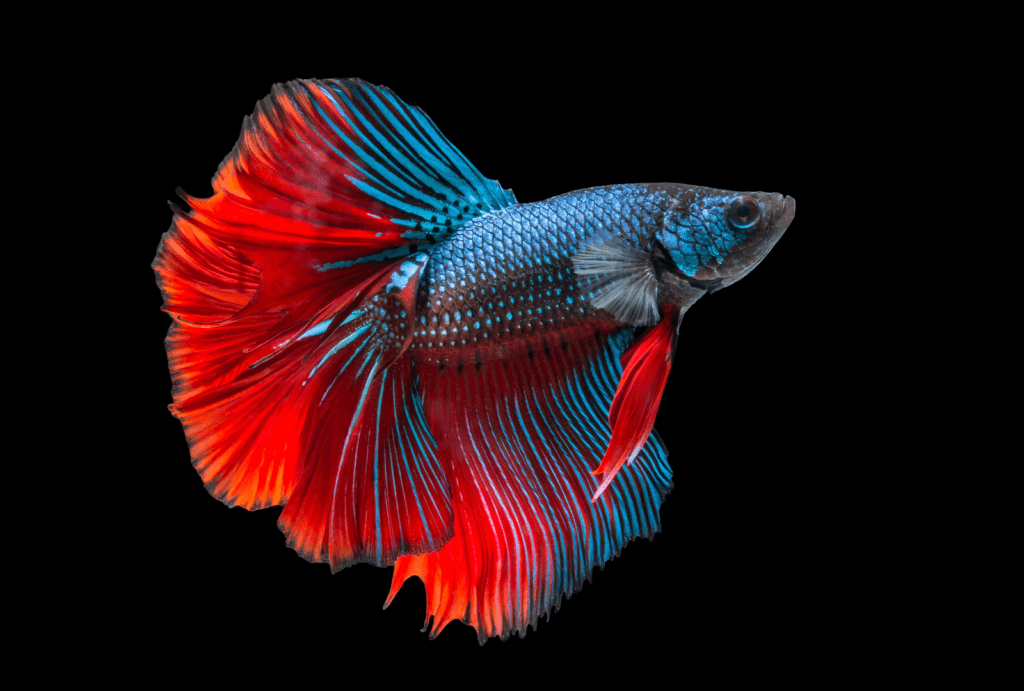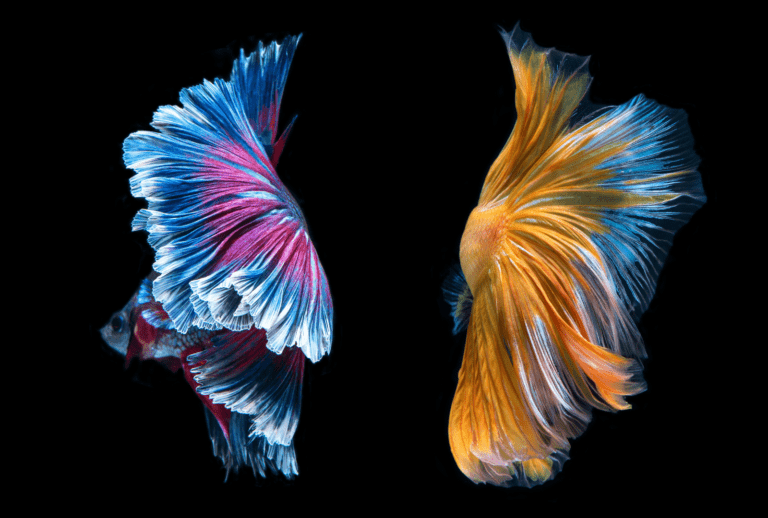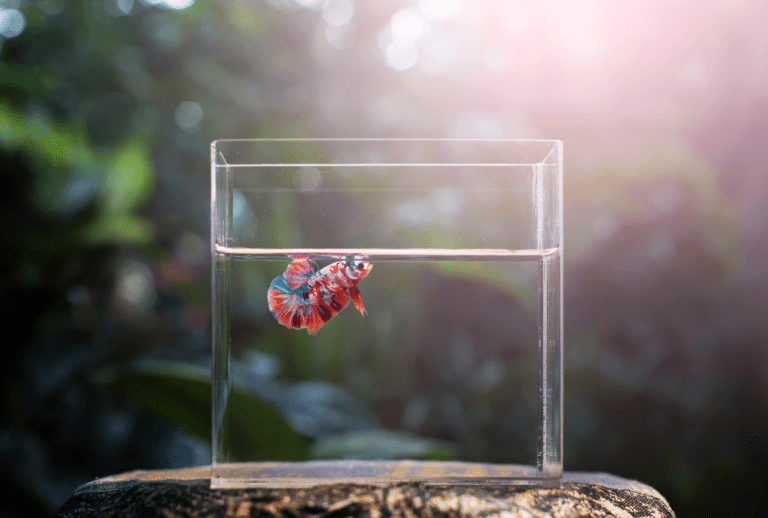Learn how to take proper care of your Betta Fish

Understanding your Betta Fish
Betta Fish, also known as Siamese Fighting Fish or Betta Splendens, are freshwater fish native to Southeast Asia and are without a doubt one of the most beautiful, interesting and popular aquarium fish in the world.
It’s possible that you’ll hear or read plenty of stories about how easy Betta Fish are to care for, but I’d advise you to take those stories with a grain of salt. Betta Fish require a lot more careful attention than most people give them.
Can I have more than one Betta Fish in a Tank?

I doubt there will ever be a single answer to this question. I’ve always followed the rule that one Betta Fish equals one tank, so I’ve never seen two Betta Fish fight and have no desire to do so. Growing up, the main rule was never put two males in the same tank because they will fight until one is dead, and more often than not, both will end up dead.
I’ve also never put the stories about how Males and Females can coexist in the same tank to the test; I’ve always been too worried about the Males being too aggressive towards the females.
I’ve read that up to 6 Female Betta Fish can coexist in a tank, but I’m so used to only having one Betta Fish in a tank that I’m content to keep it that way. If you want to keep your Betta Fish company, you have plenty of options. Which tank companions you choose will likely be determined by availability at your local Aquarium centre and the size of the Fish Tank you are willing to purchase. Some suitable tank companions for a Betta Fish can get a little big for my taste.
It is probably best for you to focus on not putting the wrong type of companion in with your Betta Fish, such as goldfish, puffers, angelfish, or tiger barbs, but don’t worry, your local Aquarium centre or Pet Shop that sells fish will most likely know everything about this. Betta Fish are well-known and extensively written about, so if all else fails, do some online research.
Purchase the right size Betta Fish Tank

Although Betta Fish are small, keeping them in a small tank is not recommended. You should buy a minimum of a 20-litre tank, but please consider up to twice that size. They will be happier if they have more space to live their lives. Betta Fish have a lot of energy and enjoy swimming around. The additional benefit of purchasing a larger tank is that the greater the volume of water in the tank, the slower toxins will build up and you’ll have a little more wiggle room to complete your water replacements and cleaning. In conclusion, the larger the tank that you provide for your Betta Fish, the happier and healthier they will be.
Position & Setup your Betta Fish Tank
Place your Betta Fish tank away from glass windows and away from direct sunlight. Depending on where you live and how hot your summers are, the combination of the radiant heat of the sun hitting the water and some slight magnification from your glass window could lead to heating up the water in your Betta Fish tank to the point where it makes them sick.
Betta Fish do like a bit of stimulation, they are also slightly inquisitive and sometimes like a nap.
Betta Fish enjoy hiding in and resting on things, and it’s common to see them seemingly taking a nap on plant leaves where there are enough of them bunched together for them to hide in. They will go inside a cave, but as with anything you make available to a Betta Fish, make sure there is nothing for their delicate fins to catch on.
Betta Fish enjoy playing around as well, so make sure to get them some moss balls and ping pong balls. They’ll nudge them around a little, which is entertaining to watch.
Do not rush to put Betta Fish in the Tank
After you’ve purchased everything and have it all set up and running, all you have to do is wait for about 4-5 weeks. You must allow your tank to develop beneficial bacteria in both the tank and the filter. If you want to speed things up a little, you can buy and use bacterial starter kits.
You’ll need to buy an electronic pH metre or a liquid indicator test kit for your tank and get your head around maintaining the proper pH level, which is between 6.5 and 8.
You should also change 25% to 50% of the water once a week, and it’s a good idea to practise before putting Betta Fish in the tank. When performing a partial water change, you must ensure that the temperature and pH of the water you are adding are correct.
So just take your time, learn everything, practise everything, and you should be fine after your initial 4-5 week waiting period to properly care for your Betta Fish.
Keep your Betta Fish Tank Clean
Keeping your Betta Fish Tank clean is critical, and the best ways to do so are to perform partial weekly water changes, vacuum the tank’s bottom, and clean excess algae from the tank’s sides.
Fish are almost constantly emitting waste in the forms of urine or poop.
Fish pee contains:
1. Ammonia, which is a colourless gas, composed of nitrogen and hydrogen.
2. Phosphorous (a mineral that promotes cell growth and repair).
3. Carbamine/urea, a colourless compound that is the main nitrogenous breakdown compound that metabolises nitrogen-containing matter in the tank.
The ammonia in fish is mainly excreted through their gills with smaller amounts finding its way into the water via their pee and poop.
Although elements of fish pee can promote the growth of aquatic plants and algae in a tank environment, if regular 25-50% water replacements are not performed on a regular basis, the ammonia level will rise, the tank will smell, and it may become toxic.
Fish poop changes based on what they eat but typically contains:
1. Calcium, a mineral that is good for bones.
2. Phosphorous, which is a mineral that promotes cell growth and repair.
3. Potassium, a mineral that is also an electrolyte and allows nerves to respond to stimulation (Yes , fish have nervous systems)
4. Nitrogen is an inert/non-reactive colourless gas that is used by cells to synthesise protein and produce nitrogenous compounds.
Fish poop, dead plant material, uneaten food, and other organic matter mostly settle on the tank’s bottom and are broken down over time, releasing ammonia into the water.
Nitrifying Bacteria (a group of around 6 types of bacteria) break down the released ammonia in the water, and using a bio filter greatly aids this process. The Nitrosomonas bacteria in this group convert ammonia to nitrite (toxic to fish), and the Nitrobacter bacteria convert the nitrite to nitrate. Nitrates do not toxically pollute the water; instead, they promote the growth of aquatic plants, which is beneficial. However, if Nitrate levels become too high in the water, it will cause accelerated algae growth and can harm your Betta Fish. Elevated Nitrate levels can stunt your Betta Fish’s growth, damage their organs, and increase their risk of contracting harmful diseases.
The use of Aquarium gravel will greatly assist you in keeping the Betta Fish tank clean. Gravel allows water to flow through it, preventing organic matter from accumulating in the substrate. Using gravel or glass marbles instead of sand makes it slightly easier to keep a Betta Fish Tank clean. Sand is a better choice for certain types of fish that like to burrow, allowing them to behave more naturally; just be careful not to suck up your aquarium sand with the vacuum.
Both Fluval and Eheim manufacture reasonably priced aquarium gravel vacuums. The Eheim quick vac pro is a battery-powered unit that can be fully submerged in the tank is a self-contained vacuum unit, so no hoses or buckets are required. The Fluval Gavelvac is a very effective unit with a syphoning pump action that is simple to use and does not clog up. It includes everything you need.
Fluval also makes a three-stage aquarium filtration unit that will help keep your tank clean while also providing much-needed water movement and aeration.
Control the water temperature of your Betta Fish Tank
Betta Fish are tropical fish, so we need to mimic their natural water temperature conditions to keep them happy. The average fresh water temperature in Thailand varies from 80degF to 86degF or 26degC to 30degC, which is quite warm.
To ensure you provide your Betta Fish with the right water temperature in their tank, you will need to match the heater to the tank as well as the typical conditions of the room you will be keeping your Betta Fish Tank in.
For example, some people might despise hot temperatures and will keep their homes as cool as a refrigerator; in these cases, you may require a higher wattage heater than would otherwise be recommended for the size tank you keep your Betta Fish in.
Other people, who may actually enjoy considerable warmth in their home, may cause some elevation of the water temperature in your Betta Fish Tank, and as difficult as it is to imagine, your tank water may require some cooling/chilling at times.
This is yet another situation whereby I think visiting your local Aquarium Centre will serve you well.
If you do feel comfortable shopping online:
1. Aqua One is a company that makes a huge range of Fish Tank heaters ranging from around 38 dollars up to around 110 dollars.
2. For Aquarium water chillers, I would look at the Hailea company to start with, they make around 6 or so different options.
Be careful about how you feed your Betta Fish
The most common mistake made by people when it comes to feeding Betta Fish is that they over-feed them. Betta Fish are a little crazy when it comes to food, you put them near food and they will eat it and it’s probably what mainly confuses people.
First and foremost, Betta Fish are carnivores that feed on insects, insect larvae, and other aquatic species that are smaller than them such as shrimp in their natural habitat in Southeast Asia.
Betta fish enjoy eating mosquito larvae, water fleas (Daphnia), and you can even learn how to grow mosquito larvae for them. They also enjoy brine and mysis shrimp, frozen wingless fruit flies, and bloodworms. Bloodworms, on the other hand, are a great once-a-week treat but contain too much fat and protein to be given on a regular basis.
Typical safe feeding for your Betta Fish is 2-3 pellets once per day, and make sure to feed your Betta at the same time every day, or you risk overfeeding them.
Alternatively, if you figure out what they
can completely consume in a maximum of 2 minutes (1 pellet possibly), you could
feed that to your Betta twice a day, but make sure each feeding time is 12
hours apart, perhaps 7am & 7pm.

